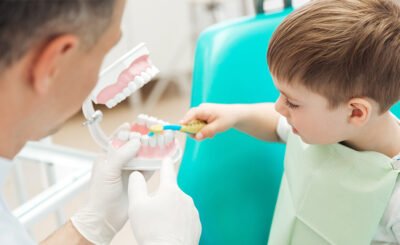Dental bone grafting is a procedure that is used to rebuild or replace the bone in the jaw that supports the teeth. It involves the use of bone from another part of the body, a donor, or synthetic material to build up the jawbone. This procedure is commonly used in dental implant procedures to replace missing teeth. This blog will explore all you need to know about dental bone grafting, its types, procedures, risks, and complications. We will also look at the role of dental labs NYC in bone grafting procedures.
Reasons for Dental Bone Grafting
The jawbone supports the teeth, and when a tooth is lost, the bone may start to resorb, leaving less bone for the placement of an implant. Dental bone grafting is done to rebuild or replace the lost bone, making it possible to place a dental implant. The procedure is also done to support the natural teeth and prevent their loss due to bone loss.
Types of Dental Bone Grafting
There are different types of bone grafts that can be used in dental procedures. These include:
Autografts: This is bone that is harvested from another part of the patient’s body, such as the hip or chin, and transplanted into the jaw.
Allografts: This is bone that is harvested from a donor or cadaver and used in the patient’s jaw.
Xenografts: This is bone that is harvested from an animal, usually a cow, and used in the patient’s jaw.
Procedure of Dental Bone Grafting
Before the dental bone grafting procedure, the dentist will perform a thorough examination of the patient’s mouth and medical history. The procedure is usually conducted under local anesthesia, and sedation may be used to keep the patient calm and relaxed.
Pre-operative preparation: The dentist will prepare the area where the bone graft will be placed by cleaning it and removing any diseased tissue. They may also use a special membrane to help the bone graft integrate with the patient’s jaw.
The grafting procedure: The bone graft material is then placed in the area where the bone needs to be rebuilt or replaced. The area is then closed with stitches or surgical glue.
Post-operative care: After the procedure, the patient will need to take care of the area where the graft was placed. They may be prescribed pain medication & antibiotics to prevent infection. The patient should also avoid chewing hard foods, smoking, and touching the area with their tongue or fingers.
Risks and Complications of Dental Bone Grafting
Like any surgical procedure, dental bone grafting comes with its risks and complications. Some of the risks include infection, bleeding, and damage to surrounding teeth or tissues. There is also a risk of the body rejecting the graft material or the graft material not integrating with the patient’s jaw.
Dental Labs and Bone Grafting
Dental labs play a crucial role in bone grafting procedures. They are responsible for creating custom-made dental appliances, including implants and crowns. In bone grafting procedures, dental labs are involved in creating the dental implant, which is the final step in the bone grafting process. The dental lab creates the implant by taking impressions of the patient’s mouth and creating a custom-made implant that fits perfectly with the patient’s teeth and jawbone.
Importance of Dental Labs in Bone Grafting
Dental labs have highly skilled technicians who create dental appliances with great precision and accuracy. In bone grafting procedures, the dental lab plays a critical role in creating the dental implant that will be placed in the patient’s jaw. The dental implant needs to be made with precision to ensure it fits perfectly with the patient’s jawbone. This is important to ensure the implant is stable and can support the artificial tooth that will be placed on top of it.
How Dental Labs Help with Dental Crown Labs Near Me
Dental labs can create custom-made dental crowns that are designed to fit perfectly with the patient’s teeth. Patients can search for “dental crown labs near me“ to find a dental lab that can create custom-made crowns.
Conclusion
Dental bone grafting is a procedure that is used to rebuild or replace the bone in the jaw that supports the teeth. The procedure is commonly used in dental implant procedures to replace missing teeth. Different types of bone grafts can be used, including autografts, allografts, and xenografts. Dental labs play a crucial role in bone grafting by creating custom dental appliances, including implants and crowns. If you are considering dental bone grafting or need dental crowns, finding a dental lab that can provide high-quality services is important. You can search for “dental labs NYC” to find a dental lab that meets your needs.








